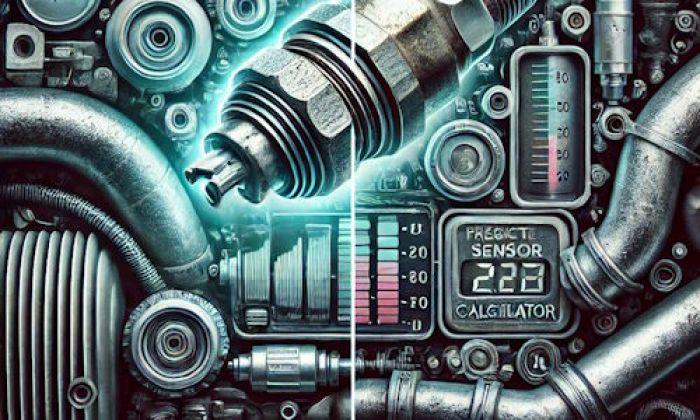The majority of the most annoying problems with modern engines are electrical issues. The problem is that up-to-date cars have a ton of various control modules and electronic parts that may glitch or go down when there are any issues with the power supply. That's why the vehicles are so tender they feel almost any issue with electrical units.
In this article, I want to recap everything I wrote with my colleagues about electrical problems in modern engines. I will give you the links for further investigation so that you can easily locate the actual problem and maybe even fix it on your own. Also, I will give here my own view on the problems and several DIY solutions.
.jpg)
No-start problems connected with electrical units
When your vehicle doesn't start, you need to check if the engine cranks. If it doesn't, the problem may be with the battery, starter connections, wiring, etc. But if the engine cranks and still doesn't start, the spark and fuel supply should be checked.
No-spark problem is pretty common. It may have various reasons and may be quite hard to diagnose. But this is not something I would suggest you start your inspection.
Pay attention to the VVT solenoids. They can easily cause a no-start issue. Sometimes, even unplugging them will allow you to start and run your engine. But this will not work for all engines. Also, the fuel pump needs to be checked. If there is no fuel supply, the pump is the number one culprit.
If the engine doesn't start because it won't crank, the problem is most likely with the starter. You may try checking the wires connecting the starter or jumping it with a screwdriver. Other than that, there are no quick DIY solutions that would allow you to repair the starter on the roadside.
No-start problems highlights:
- DIY repairs:possible but complicated
- Tools needed:basictools set
- Commonreasons:battery issues, wiring problems, bad connections, electronic unit failure
- Time to repair:0.5 - 3 hours
- Price for parts:$100 - $450
- Can you drive?Obviously, no
- Alternative solutions:jump-starting, starter shorting, tow-truck
Engine sensor problems
Sensors in modern engines are super-important. They control every single aspect of engine work and can easily leave you stranded if something goes wrong.
Sometimes, problems come from unexpected sensors like the exhaust back pressure sensor. Or the vehicle may start throwing all kinds of messages and warnings because the oil level sensor is malfunctioning. But in these cases, you can do close to nothing to solve the issue but take it in for a professional inspection.
When it comes to simple problems such as coolant temp sensor readings, you can do more. Even replacing such a sensor on your own is not a big problem after watching several tutorial videos. Sometimes, resetting such a sensor leads to quick fixes and zero costs.
Then, there is a throttle position sensor. In older cars, these sensors could only lead to high RPM or unstable work. While in modern vehicles with electronic throttle, problems with these sensors may easily block the ability of your car to move at all. Fortunately, you may try relearn procedures or even replace these sensors without going to the dealership.
The situation gets worse when there are issues with the crankshaft position sensor. Your engine may or may not work in this condition. Unfortunately, there are loads of common problems with these sensors, especially when they age. There is one tiny hope to relearn the sensor if it starts malfunctioning. But, in most cases, it requires replacement.
Engine sensors problems highlights:
- DIY repairs:possible
- Tools needed:scanner,basictools
- Commonreasons:sensor problems, electric supply issues, software glitches
- Time to repair:1 - 2.5 hours
- Price for parts:$50 - $250
- Can you drive?In most cases, yes
- Alternative solutions:bypassing, driving in limp mode, roadside assistance
Electrical power supply problems
Engines totally depend on the power supply from the battery and alternator. If something goes wrong with these two units or with the wires that deliver the power, you will not be able to drive your car the normal way.
Sometimes, we may think that the problem is with the power supply after a quick inspection. But the issues may be with the unit that receives the power like the ignition coil or the fuel injector. Sometimes, the issues may be with the distributing units in the electrical system causing low voltage on certain parts. Of course, driving with such a problem can sometimes be possible, but ignoring the issue is certainly not a good solution.
You should always start checking electrical problems with the battery and alternator. But if it's not something simple, better find a good mechanic to help you locate the problem.
Electrical power supply problems highlights:
- DIY repairs:possible (sometimes)
- Tools needed:electrical tools,basiccar repair tools
- Commonreasons:battery or alternator problems, wiring issues, power distribution problems
- Time to repair:2 - 5 hours
- Price for parts:$10 - $350
- Can you drive?In most cases, no
- Alternative solutions:jumping, roadside assistance
Ignition problems
Engine ignition problems lead to no-start issues and also, even if started, the engine may work harshly, misfire badly, or act poorly in other ways.
While, in most cases, ignition problems come from ignition coils, it's worth checking the power supply first. Also, to check the coils, you may change them in places and see if the vehicle starts throwing another code in your scanner.
By the way, in most cars, it doesn't matter which ignition coil goes where. So, you can swap them.
Interestingly, people tend to forget about spark plugs. But they are very common culprits of the issues with the ignition and spark.
Ignition problems highlights:
- DIY repairs:possible
- Tools needed:basiccar repair tools
- Commonreasons:ignition coils, spark plugs, wiring, power supply
- Time to repair:1 - 3 hours
- Price for parts:$50 - $250
- Can you drive?Yes
- Alternative solutions:limping, swapping spark plugs, swapping ignition coils
Electrical problems with the fuel supply
While the spark in the engine is super-important, if there is nothing to ignite, the engine still won't run.
One of the common problems is the wiring to the fuel injectors issue. This wiring is located in a pretty bad place, so it's prone to various destroying factors affecting it. If you don't have any fuel, it's the first thing to check.
It's very common to have a faulty fuel pump or electrical connections on the pump. But checking this on your own is pretty hard due to the fuel pump location.
Also, the electrical problems with the fuel supply system may be quite surprising. Like your purge valve can be bad or it can get a bad power supply. Again, it's not that easy to check.
Fuel supply problems highlights:
- DIY repairs:very complicated
- Tools needed:pro electrician's tools
- Commonreasons:power supply, electric units issues
- Time to repair:3 - 5 hours
- Price for parts:$150 - $600
- Can you drive?No
- Alternative solutions:no solution but repairing the problem
RPM problems due to electrical issues
While engine RPM may sometimes be affected by the engine itself or the fuel supply, in most cases, these problems are caused by an electrical glitch or gremlin.
Several electrical issues may cause low engine RPM or vice versa - constantly high RPM. Also, the revolutions may go higher and lower when the vehicle is idling. You should check the idle air control valve. Sometimes, unplugging it may set the vehicle to limp mode and it will idle at about 1500 RPM. If unplugging doesn't change anything, the valve is dead.
Also, there is the throttle position sensor that may malfunction. If your car idles at 1000 RPM or revs up high when only started and then goes normal, check the TPS unit.
But if the idling speed fluctuates, it may also mean other problems like EGR issues, exhaust problems, engine temperature sensor issues, and throttle body anomalies. It's not always connected to one of the electrical components of the engine.
Electrical problems leading to RPM anomalies highlights:
- DIY repairs:possible but complicated
- Tools needed:inspection and repair tools
- Commonreasons:idle control valve, throttle position sensor, wiring, software
- Time to repair:1 - 2.5 hours
- Price for parts:$50 - $300
- Can you drive?Yes
- Alternative solutions:unplugging sensors, resetting or relearning sensors
About the authors
The CarAraC research team is composed of seasoned auto mechanics and automotive industry professionals, including individuals with advanced degrees and certifications in their field. Our team members boast prestigious credentials, reflecting their extensive knowledge and skills. These qualifications include: IMI: Institute of the Motor Industry, ASE-Certified Master Automobile Technicians; Coventry University, Graduate of MA in Automotive Journalism; Politecnico di Torino, Italy, MS Automotive Engineering; Ss. Cyril and Methodius University in Skopje, Mechanical University in Skopje; TOC Automotive College; DHA Suffa University, Department of Mechanical Engineering






Add comment